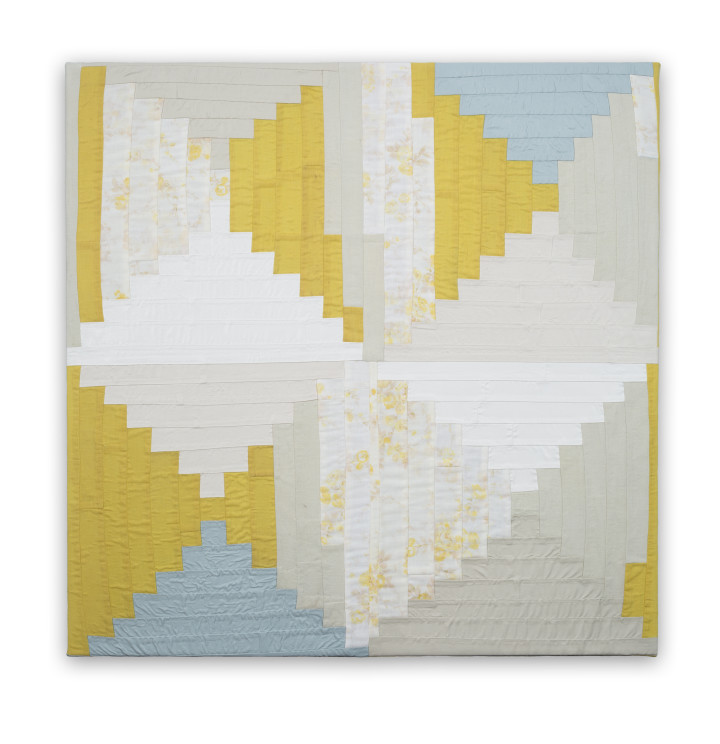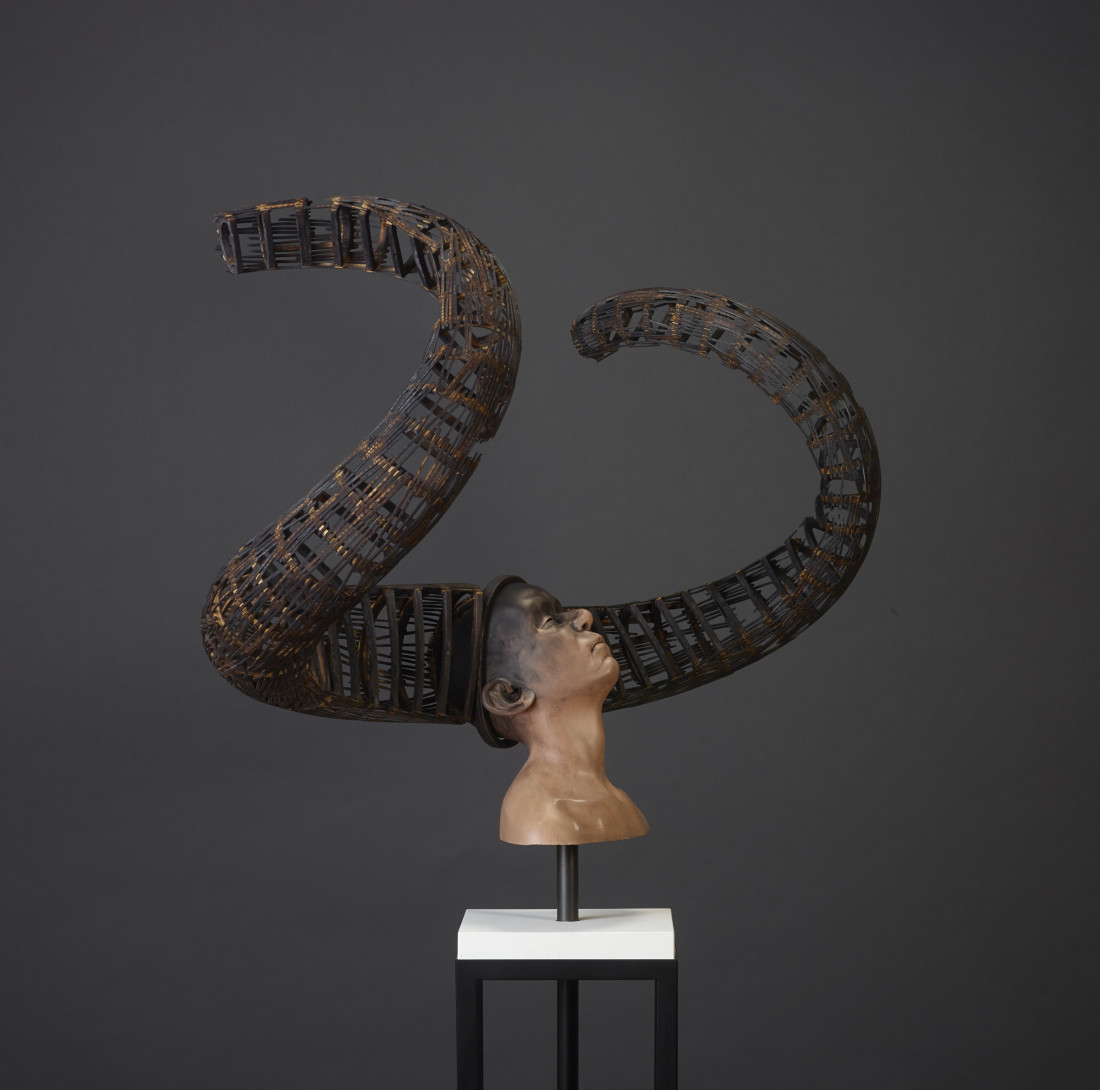In the essay “Pursuing Excellence,” part of the catalog for the 2007 exhibition of the same name, writer Melissa G. Post asked the question, “Is there a Blue Ridge style?” The 19 artists, interviewed and represented in the exhibition — drawn from makers in the studio craft movement — had different answers. “Some identify ‘style’ more with attitude,” Post wrote, and, “others acknowledge medium and process as the source of a shared aesthetic.” Also “professionalism,” she continued, “in the form of execution and innovation, surfaced as a final attribute characteristic.”
Those statements ring true today as the Center for Craft, Creativity and Design teams up again with Blue Spiral 1 on the 10th anniversary of that first survey of studio craft in the region. Forging Futures, an exhibition of 24 makers, opens Thursday, June 29. Companion events, including panel discussions, a lecture and a fundraiser, run through Thursday, Aug. 17.
Bringing ideas into being
What, exactly, is studio craft? According to the Metropolitan Museum of Art, it developed in this country following World War II, and in the last half-century has been characterized by craft artists experimenting with “nontraditional materials and new techniques, producing bold, abstract and sculptural art, as well as continuing to make utilitarian objects.”
Textile artist Rachel Meginnes says that when we call something a craft object, there’s implied functionality, but, for example, many vessels being made by today’s ceramists are intended to sit on a shelf rather than be used. “To me, physically how it’s made, and how you bring an idea into being, is craft, essentially.”
Meginnes, who was in residency at Penland School of Crafts from 2012 to 2015, will be part of Forging Futures, along with Dean Allison, Alex Bernstein, Brian Boggs, Elizabeth Brim, Josh Copus, Heather Mae Erickson, Dustin Farnsworth, Jessica Green, Andrew Hayes, Eric Knoche, Jaydan Moore, Zack Noble, Amy Putansu, Tom Shields, Pablo Soto and Hayden Wilson who, together, represent wood, metal, clay, glass and fiber. The exhibition also includes Lisa Clague, Hoss Haley, Mark Peiser, George Peterson, Michael Sherrill, Kathy Triplett and Stoney Lamar, who were featured in 2007’s Pursuing Excellence. Lamar, a woodworker as well as a longtime and outgoing CCCD board member, will also be honored at the Aug. 10 Celebrating Stoney Lamar dinner and party, a ticketed annual benefit for the institution.

In preparing for Forging Futures, CCCD assistant director and curator Marilyn Zapf and Blue Spiral 1 assistant gallery director Michael Manes spent time looking through materials from the previous exhibit. “What was impactful to me was … none of these people were originally from North Carolina originally. They’d mostly moved here in the ’70s and ’90s, and it occurred to me how new the studio craft movement is to this region,” Zapf says of the first group. It surprised her because throughout the country, Western North Carolina is known for its studio crafts. The studio glass movement was born in WNC, and many artists in that field moved here to study with the likes of Harvey Littleton (originally from Corning, N.Y.) and Mark Peizer, who started the glass program at Penland.
Yes to everything
But this next generation of studio craft artists, as represented by Forging Futures, does include North Carolina natives such as glass artists Wilson and Bernstein. “There are a handful of artists now, some in the emerging category, some established, who were born in or near Western North Carolina,” says Manes. If a similar exhibition is mounted in another 10 years, both he and Zapf hope that half or more of represented crafters will be natives.
Though not from the area, Meginnes has decided to stay here for now. She previously studied textiles in Japan, completed a Master of Fine Arts in fibers in Seattle and was the co-owner of a decorative rug design company before deciding to dedicate herself full time to studio work. Penland “gave me three years to explore nonstop,” she says. “It was not a straight trajectory, but steadfast. I kind of said yes to everything.”
The location, though remote, also provides a tightknit community of fellow crafters and a respect for the work. “This area has helped me stay in that [creative] space,” says Meginnes. “Penland itself was founded on weaving. … The fact that textiles are revered makes me not doubt my passion for them.”
Perhaps counterintuitively, though, when Meginnes left production work for studio craft, she also began working off her loom. At first, it was because she didn’t have space for the loom, so “I started to take cloth and unweave it instead of weave it, because I was very focused on the structure,” she says. “That approach of undoing versus doing became a pattern.”
While at Penland, she was given her first cutter quilt — a bedspread in such bad shape it can only be cut up for pillows or other projects. Meginnes had already been working with quilt patterns and with removing threads. She began deconstructing cutter quilts, removing the top layer to reveal the construction and original colors, then “sanding gesso into the slowly deteriorating surface, forming the tattered texture of the piece,” as is explained on her Penland bio.
“If anything, it’s a magical discovery process,” Meginnes says. “I feel bad if a piece fails because it feels like a waste of people’s previous efforts as well as my own. … There is this pressure that I don’t want to ruin the beauty that’s there, but I have to make it my own.”
![LESSON PLANS: “A closer examination of [Penland School of Crafts, the Southern Highland Craft Guild and the Haywood Community College Professional Crafts Program] begins to trace the unique rise of studio craft in western North Carolina,” writers Marilyn Zapf in the catalog for ‘Forging Futures.’ Pictured, “Lingo,” recycled skateboards and mixed media by George Peterson. Photo by Tim Barnwell](http://mountainx.com/wp-content/uploads/2017/06/Peterson_Lingos.jpg)
Blue Ridge style revisited
Failure plays a role in the methods of many studio crafters — enough so that, in creating programming around the Forging Futures exhibit, the CCCD and Blue Spiral included a “Spectacular Failure” panel discussion about how wrong turns lead to innovation.
The exhibition and its events also spotlight trends in studio craft, such as collaboration. “It’s necessary and also a bit of a convenience. All these resources are here,” says Manes. Facilities like Penland and Haywood Community College’s professional crafts program provide tools and technology to take crafters to the next level. “That kind of accessibility has left the classroom or the campus and moved into the community,” Manes says.
Other shifts in the movement include more conceptual craft in this year’s show, says Manes, noting sculptor Farnsworth, who’s taken his work to a grander scale, and Wilson, who’s instilled his pieces with social commentary.
A shift of how an artist uses his or her materials is one trend, and “there’s also the incorporation of other materials, so it’s harder to classify an artist as ‘just clay’ or ‘just glass,’” says Zapf. That, too, comes from increased collaboration and cross-communication of makers, says Manes.
But for all the changes in studio craft, there are also certain touchstones. “The thread between it all,” say Manes of the 2007 and 2017 surveys, “is craftsmanship, and the level of high quality within the work.”




Before you comment
The comments section is here to provide a platform for civil dialogue on the issues we face together as a local community. Xpress is committed to offering this platform for all voices, but when the tone of the discussion gets nasty or strays off topic, we believe many people choose not to participate. Xpress editors are determined to moderate comments to ensure a constructive interchange is maintained. All comments judged not to be in keeping with the spirit of civil discourse will be removed and repeat violators will be banned. See here for our terms of service. Thank you for being part of this effort to promote respectful discussion.